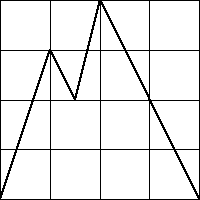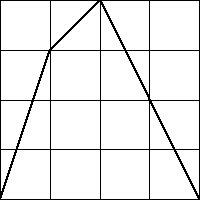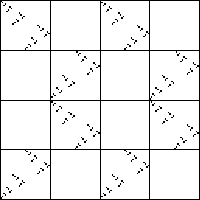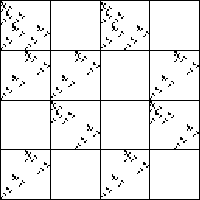| 10. From the graphs of the functions, here are the allowed transitions |
| (a) 1 -> 1, 1 -> 2, 2 -> 3, 2 -> 4,
3 -> 3, 3 -> 4, 4 -> 1, 4 -> 2 |
| (b) 1 ->1, 1 -> 2, 1 -> 3, 2 -> 3,
2 -> 4, 3 -> 3, 3 -> 4, 4 -> 1, 4 -> 2 |
| (c) 1 -> 1, 1 -> 2, 1 -> 3, 2 -> 4,
3 -> 3, 3 -> 4, 4 -> 1, 4 -> 2 |
| Here are the corresponding occupied addresses |
| (a) 11, 21, 32, 42, 33, 43, 14, 24 |
| (b) 11, 21, 31, 32, 42, 33, 43, 14, 24 |
| (c) 11, 21, 31, 42, 33, 43, 14, 24 |
So we see function (a) and driven IFS (i) have the same occupied length 2 addresses.
Also, function (b) and driven IFS (ii) have the same occupied length 2 addresses. Consequently,
(i) and (ii) could be the driven IFS of functions (a) and (b).







